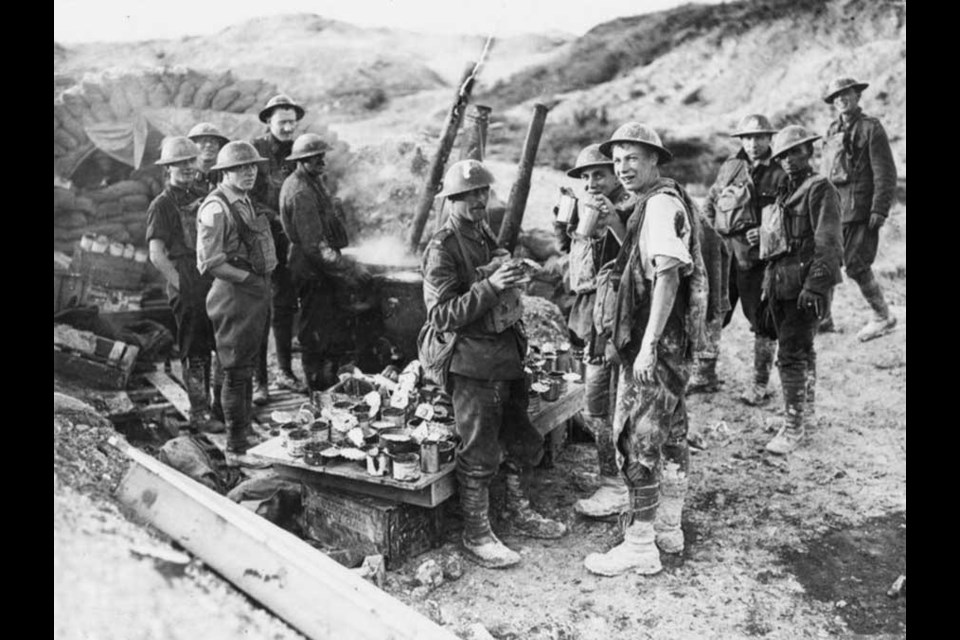Canadian troops’ capture of Vimy Ridge required immense planning during the First World War, but grabbing Hill 70 several months later proved to be one of the “hardest battles” they fought.
While a great victory, 23 men from the Moose Jaw area died during the battle. According to the Saskatchewan Virtual War Memorial, those men included:
- From Moose Jaw: Francis Buckley, Ernest Corbett, Francis Edmond Forth, William Stanley Harpham, Ormonde George William Hudson, Aubrey LeVern Lennox, William Andrew Currie McKie, Joseph Anthony Metcalfe, Charles Murray, Robert William Murray, George Henry Reeve, John Anderson Reid, Robert Alexander Scilley, William Taylor, Richard Southwell Urton, and Charles Williams.
- From Gilroy: Andrew Edwin Clancy
- From Mortlach: Henry Fewster
- From Glenside: Albert Harlock and Peter Simpson Moir
- From Crystal Hill: James Wesley Heslop
- From Dahinda: Henry Cecil Kingsley
- From Spring Valley: John Olofson
- From Pinto Creek: Richard Norman Watt
Allied command initially wanted the Canadians to capture the occupied French city of Lens — north of Vimy Ridge — to draw attention away from another sector. However, newly installed Canadian commander, Lt.-Gen Arthur Currie, thought Hill 70 was tactically more important.
He believed a traditional, frontal assault on Lens would be futile if the Germans could shoot down from the commanding hills. So, Currie convinced his superiors to alter the plan by making Hill 70 the Canadians’ main objective.
Currie believed capturing the point would provoke the Germans to leave their dugouts and attack, allowing the Canadians to kill many enemies and drive them away.
Currie’s superiors told him the Germans would never let the Canadians keep the position because of its tactical importance, but he had already factored that into his plans.
“Vimy had been a ‘bite’ and ‘hold’ operation; at Hill 70, Currie planned for a ‘bite,’ ‘hold,’ and ‘destroy’ campaign,” historian Tim Cook wrote in Legion Magazine.
“The Canadians would bite off Hill 70 and hold the new terrain, which would force the enemy to leave the safety of his trenches and attack over open ground into the mouth of their massed guns, where he would be destroyed.”
The battle launched with complete surprise at 4:25 a.m. on Aug. 15, 1917, when 10 front-line battalions — roughly 100,000 men — surged out of their trenches.
The Canadians captured the heights of Hill 70, but the cost was high. By the end of the first day, 1,056 Canadians were dead, 2,432 were wounded and 39 had been taken prisoner.
“Shocked by the loss of Hill 70, the Germans immediately counterattacked. It was as Currie had predicted,” Cook wrote.
The Germans marched forward over open ground and into a prepared kill zone swept by over 250 machine-gun teams and artillery. The Germans threw their forces against the Canadian strongpoint for the next three days. Assaults were torn apart in the storm of steel and high explosives, but some hand-to-hand fighting did occur.
Amid the slaughter, both sides used chemical agents, leaving defenders and attackers to fight nearly blind as they peered through foggy respirators. Despite bravery and stubbornness, the Germans were thrown back each time, and by Aug. 18, the Canadians had defeated 21 counterattacks.
“Even hardened combat warriors were sickened by the massacre, as torn and mangled Germans lay on the battlefield by the thousands,” Cook said.
The battle finished on Aug. 25. The Canadians lost 10,000 men dead, wounded or missing, a similar number as Vimy Ridge.
Allied General Sir Douglas Haig characterized Hill 70 as “one of the finest minor operations of the war.” Currie thought it one of the “hardest battles” ever fought by the Canadians but also “a great and wonderful victory” and “one of the finest performances of the war.”
The enemy had been bled white, suffering an estimated 25,000 casualties, while the Corps lost over 10,000 killed and wounded when the pre-battle losses from raids and shelling were included.
Attesting to the battle’s ferocity, six Canadians received the Victoria Cross, the Empire’s highest award for bravery.




